calsfoundation@cals.org
Cross County
| Region: | Northeast |
| County Seat: | Wynne |
| Established: | November 15, 1862 |
| Parent Counties: | Crittenden, Poinsett, St. Francis |
| Population: | 16,833 (2020 Census) |
| Area: | 616.32 square miles (2020 Census) |
Historical Population as per the U.S. Census:
|
1810 |
1820 |
1830 |
1840 |
1850 |
1860 |
1870 |
1880 |
1890 |
1900 |
|
– |
– |
– |
– |
– |
– |
3,915 |
5,050 |
7,693 |
11,051 |
|
1910 |
1920 |
1930 |
1940 |
1950 |
1960 |
1970 |
1980 |
1990 |
2000 |
|
14,042 |
18,579 |
25,723 |
26,046 |
24,757 |
19,551 |
19,783 |
20,434 |
19,225 |
19,526 |
|
2010 |
2020 |
|
|
|
|
|
|
|
|
|
17,870 |
16,833 |
|
|
|
|
|
|
|
|
| Population Characteristics as per the 2020 U.S. Census: | ||
| White |
12,213 |
72.6% |
| African American |
3,658 |
21.7% |
| American Indian |
48 |
0.3% |
| Asian |
102 |
0.6% |
| Native Hawaiian or Other Pacific Islander |
5 |
0.0% |
| Some Other Race |
146 |
0.9% |
| Two or More Races |
661 |
3.9% |
| Hispanic Origin (may be of any race) |
352 |
2.1% |
| Population Density |
27.3 people per square mile |
|
| Median Household Income (2019) |
$46,787 |
|
| Per Capita Income (2015–2019) |
$25,380 |
|
| Percent of Population below Poverty Line (2019) |
15.4% |
|
Cross County is one of the state’s leading producers of soybeans and rice, the location of the only copper tube mill in Arkansas, and the home of two state parks: Village Creek State Park and Parkin Archeological State Park. Created during the Civil War, the county was largely shaped by railroad development during the Gilded Age, with small industry and tourism becoming more of a focus in the late twentieth and early twenty-first centuries.
Geologically, the county is divided roughly into thirds. Crowley’s Ridge, a glacial age erosional remnant covered with a unique loessal topsoil, traverses the county north to south, rising seventy-five to 100 feet above ancient deltaic alluvial floodplains on either side. The eastern third is drained primarily by the St. Francis River, while the western portion drains into the L’Anguille River. With the exception of the population centers (Wynne, Parkin, Cherry Valley, Vanndale, Fair Oaks, Tilton, Hickory Ridge, Birdeye, Levesque, and Bay Village), the county’s lowlands are devoted to rice, soybeans, and cotton, while the ridge accommodates apple, peach, and pecan orchards, as well as herds of goats and cattle.
European Exploration and Settlement
Over time, the area has been home to black bear, bison, and deer; only the deer remain today. Hernando de Soto visited the village of Casqui (near present-day Parkin) in 1541. Many historians and researchers believe that the remains of the Indian mound at Casqui are preserved at Parkin Archeological State Park. Several head pots have been excavated in the county. The earliest known white settler in the region was Samuel Filligan, who built a small dwelling next to Cooper’s Creek in 1798.
Louisiana Purchase through Early Statehood
Around the time of the Louisiana Purchase, the sparse population of the area consisted of French hunters, Cherokee, and a few English frontiersmen, some claiming ownership of Spanish land grants (such as No. 2379—the future location of Wittsburg). The Cherokee were removed via the Trail of Tears in the 1830s, and settlers from Tennessee, Alabama, Georgia, Kentucky, and Missouri moved in, making their homes in the area. The new landowners brought with them slaves to work on the plantations and farms established on the arable soils of the county. Early settlements in the region included Vanndale, named for its first postmaster J. M. Vann, and Wittsburg, an important landing on the St. Francis River.
Civil War through Reconstruction
David C. Cross, a planter and slave owner, owned thousands of acres in the area of Poinsett and St. Francis counties in 1860. At the time of the 1860 census, he owned at least twenty-one enslaved people. When the Civil War began, he organized a company of soldiers from the local populace, financed outfitting them in uniform, and was elected their captain. The company became part of the Fifth Arkansas Infantry Regiment (CS). Cross served as the original colonel of the regiment until after the Battle of Shiloh. He was not reelected as colonel of the regiment during an army-wide reorganization in May 1862 and returned home to what became Cross County.
Wittsburg was an important location during the Civil War. A fortification was constructed in the community in 1863 during the Little Rock Campaign, and Wittsburg was the site of the surrender of thousands of Confederate troops at the end of the war.
On November 15, 1862, the Arkansas General Assembly created Cross County as the state’s fifty-third county, with a temporary county seat in Wittsburg. The legislature took land from Crittenden, Poinsett, and St. Francis counties for the new county named in honor of David Cross. Because of Union activity in the Wittsburg area, county business was conducted secretly in the town of Pineville. After the war ended, the county seat was officially moved to Cleburne, named for Civil War general Patrick Cleburne. The county seat remained there until 1868, when it was returned to Wittsburg. The seat was moved again to Vanndale in 1884, because Wittsburg had been bypassed by the railroads and was already declining. Then, in 1903, Wynne became the county seat, as it remains in the twenty-first century.
Post Reconstruction through the Gilded Age
Steamboats could navigate the St. Francis River as far north as the river port of Wittsburg. Large cotton warehouses were built in the town. Farmers brought their produce from points up and down the ridge to be exchanged for consumer goods delivered to the local merchants. Tenant farming and sharecropping continued many of the agricultural patterns of pre-war slavery for several decades in Cross County and other parts of the Mississippi Delta.
The first railroad was completed across Cross County in 1882. It ran from Knobel (Clay County) to Helena (Phillips County), connecting all the Arkansas county seats, except Wittsburg, located on the eastern side of the ridge. A spur track named Wynne Station, after one of the directors of the First National Bank of Eastern Arkansas in Forrest City (St. Francis County), attracted businessman B. B. Merriman. He and others established a small tent city around a derailed box car in 1882, and some of the Wittsburg businesses quickly opened branches in Wynne.
An east-to-west track of the St. Louis, Iron Mountain and Southern Railroad was completed on November 16, 1887, from Memphis, Tennessee, to Bald Knob (White County). To take advantage of a natural gap in Crowley’s Ridge, the railroad’s route had to go north of Wittsburg about three miles, but the planners engineered the design to cross at Wynne Station. After 1886, the town became known as Wynne Junction. By May 28, 1888, the incorporated town was simply called Wynne. The settlement called Hickory Ridge began around 1875, although it did not incorporate as a second-class city until 1949.
The county was the site of numerous incidents of racial violence in the late nineteenth century. Lynched in 1871, African American Frank Harris allegedly killed a white twelve-year-old girl. Two separate lynchings took place in 1892, both in Wynne (one of an unidentified man, the other of one Allen Carter). The lynching of Bob Greenwood took place the following year. Another lynching, that of Elias Wells, took place in 1902.
Early Twentieth Century
The growth of Vanndale and Wynne along the railroad balanced the decline of river cities such as Wittsburg. This transfer of population was increased by flooding in the river valley when the St. Francis River broke through its levees in 1912 and 1913, and especially in the Flood of 1927. The American Red Cross tended many refugees on the higher ground of Wynne during that flood, and railroads were used to evacuate flood victims from the county. The Great Depression, as well as the Drought of 1930–1931, followed quickly after the flood, bringing hardship to farmers and industrial workers alike. Works Progress Administration (WPA) accomplishments during the Depression included paved streets in the cities of Parkin and Wynne, improved highways throughout the county, drainage ditches, sanitary projects, and sewing clubs.
Several schools serving the African American population operated in the county in the late nineteenth and early twentieth centuries. These included the Northern Ohio School at Parkin and the Wynne Normal and Industrial Institute.
Noted Southern historian C. Vann Woodward was born at Vanndale in 1908.
World War II through the Faubus Era
American involvement in World War II replaced the job shortage of the Depression with a labor shortage as men joined the armed forces to fight in Europe and in the South Pacific. Area farmers welcomed a prisoner of war (POW) camp in Wynne, as captured German and Italian soldiers were used for farm work in Arkansas. Cross County native Bette Greene based her novel Summer of My German Soldier on this presence of POWs in Cross County. Following the war, many workers left Cross County for larger cities such as Little Rock (Pulaski County), Memphis, or St. Louis, Missouri, where jobs were more plentiful. However, new cities were incorporated in the county at this time, including Hickory Ridge and Cherry Valley.
Soybeans and rice began to displace cotton as the chief crops of Cross County, but farms became more mechanized, also reducing jobs in the county. A men’s clothing factory, Rainfair, opened in 1954, followed by Addison Shoe Company in 1960 and Halstead Industries (now Mueller Copper Tube Products, Inc.), a manufacturer of copper tubing and fabricator of air-cooling units, in 1963.
Because of its proximity to Memphis, Cross County was also important in the birth and growth of blues music. Performers such as B. B. King and “Howlin’ Wolf” Burnett honed their craft in Parkin, and Cross County towns also saw early performances by rock legends Carl Perkins, Johnny Cash, and Elvis Presley.
Modern Era
Desegregation of Cross County schools began in 1967. At the same time, many smaller school districts were being consolidated. Parkin schools were consolidated into the Wynne school system in 2005; most other schools became part of the Cross County School System. In 1999, Cross County voters approved a one-cent funding measure intended to foster economic development. County leaders have sought to encourage the growth of new business in the county. In 2005, an automotive component parts manufacturer, Eakas AR, located just south of Wynne. A regional airport south of Wynne is being developed with the cooperation of St. Francis County.
Attractions
Village Creek State Park, a 6,909-acre nature-themed attraction, was established in 1976. The Parkin Archeological State Park is home to the remnants of a Native American village, as well as a one-room schoolhouse operated for the children of workers at the Depression-era Ohio Mills operation. Wynne is home to the Cross County Museum and Archives. Cherry Valley holds a community festival, called CherryFest, on the last Saturday of each September.
Numerous structures and areas are included on the National Register of Historic Places. These include the residential East Hamilton Avenue Historic District, the Wynne Wholesale Commercial Historic District, the Woman’s Progressive Club, and the Wynne Post Office.
For additional information:
Biographical and Historical Memoirs of Eastern Arkansas. Chicago: Goodspeed Publishing Co., 1890.
Chowning, Robert W. History of Cross County, Arkansas 1955. Wynne, AR: Wynne Progress, 1955.
Cross County, Arkansas: History and Families. Morley, MO: Acclaim Press, 2012.
Cross County Chamber of Commerce and Economic Development Corporation. http://www.crosscountychamber.com/ (accessed February 14, 2022).
Cross County Historical Society. http://www.cchs1862.org/ (accessed February 14, 2022).
Hartness, Richard L. Wittsburg, Arkansas: Crowley’s Ridge Steamboat River Port, 1848–1890. Little Rock, AR: Rose Publishing Company, 1979.
Richard L. Hartness Sr.
Cross County Historical Society
Staff of the Encyclopedia of Arkansas History & Culture
Revised 2022, David Sesser, Henderson State University
 Helena Expedition (March 5–12, 1863)
Helena Expedition (March 5–12, 1863) Cherry Valley Depot
Cherry Valley Depot 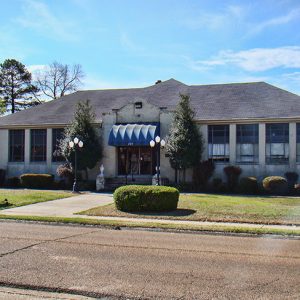 Cross County Museum
Cross County Museum  Cross County Museum
Cross County Museum 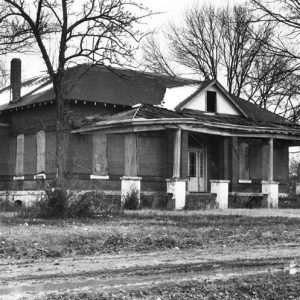 Old Cross County Courthouse
Old Cross County Courthouse 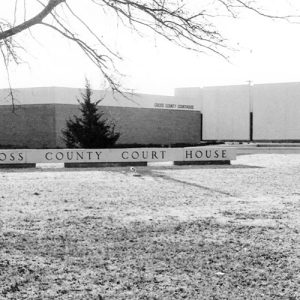 Cross County Courthouse
Cross County Courthouse  Cross County Map
Cross County Map  David Cross
David Cross  Lake Dunn
Lake Dunn 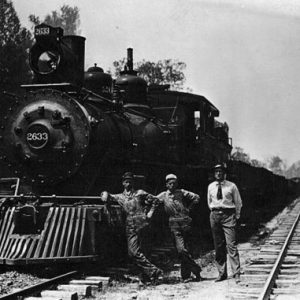 MoPac Locomotive
MoPac Locomotive  Parkin Flood
Parkin Flood 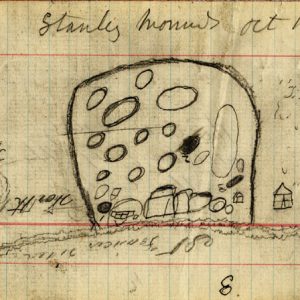 Stanly Mounds
Stanly Mounds 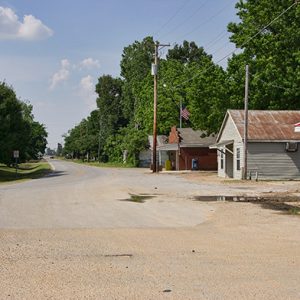 Vanndale
Vanndale 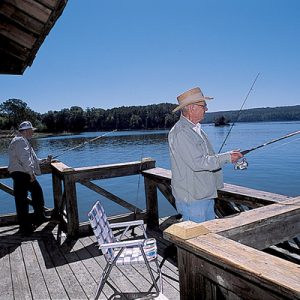 Village Creek State Park
Village Creek State Park  Wittsburg Natural Area
Wittsburg Natural Area 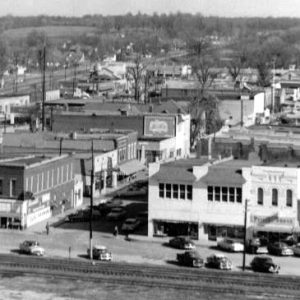 Wynne Street Scene
Wynne Street Scene 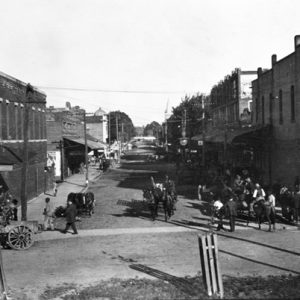 Wynne Street Scene
Wynne Street Scene 




My father, Charles Wesley Flowers, grew up in Vanndale and played on the Vanndale basketball team. He also played professional baseball for the Brooklyn Dodgers in the early 1940s.
http://www.baseball-reference.com/players/f/flowewe01.shtml
My grandfather, Herbert Stafford, was born in Cross County. The fact that schools there weren’t desegregated until 1971 leads me to believe that a story he passed down to my mother wasn’t a tall tale at all. Supposedly his father, Bud Stafford, left property with a decent amount of land there. When Herbert made a trip from Chicago to Cross County to have the property legally transferred to himself and siblings, he was verbally threatened that he’d better go back to Chicago while he had the chance if he knew what was best for him.